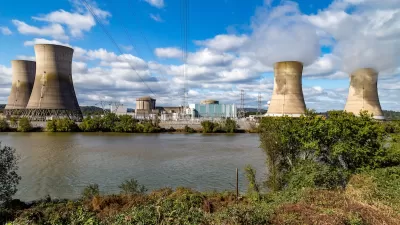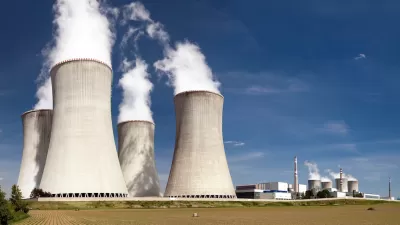G.E. is currently experimenting with a new lased-based technology that could make nuclear enrichment much easier. This would be a boon to nuclear power, but would also make nuclear-based weapons easier to make.
"'The threat is there,' says Edwin Lyman, a nuclear nonproliferation expert with the Union of Concerned Scientists, a research and advocacy group in Cambridge, Mass. 'If [GE-Hitachi] succeeds in overcoming remaining technological hurdles, the resulting laser-enrichment would be extremely vulnerable to proliferation. It's also a technology that several countries would likely pursue.'
Henry Sokolski, director of the Nonproliferation Policy Education Center in Washington, is worried about SILEX too. 'If it works, it has enormous industrial implications with the US perhaps bringing back all the enrichment services it has lost to Europe and Russia,' he says.
'But how long can you keep this process secret and out of the hands of proliferators? That's the real question.'
The US Department of Energy, which oversees nuclear power, is not worried.
'Any program to build additional enrichment facilities in the United States will be evaluated for its safety, environmental, and nonproliferation characteristics before it is licensed to operate,' the DOE said in a statement responding to Monitor queries."
FULL STORY: Will lasers brighten nuclear’s future?

Americans May Be Stuck — But Why?
Americans are moving a lot less than they once did, and that is a problem. While Yoni Applebaum, in his highly-publicized article Stuck, gets the reasons badly wrong, it's still important to ask: why are we moving so much less than before?

Using Old Oil and Gas Wells for Green Energy Storage
Penn State researchers have found that repurposing abandoned oil and gas wells for geothermal-assisted compressed-air energy storage can boost efficiency, reduce environmental risks, and support clean energy and job transitions.

Placekeeping: Setting a New Precedent for City Planners
How a preservation-based approach to redevelopment and urban design can prevent displacement and honor legacy communities.

Study: Maui’s Plan to Convert Vacation Rentals to Long-Term Housing Could Cause Nearly $1 Billion Economic Loss
The plan would reduce visitor accommodation by 25,% resulting in 1,900 jobs lost.

Idaho Data: Unexpected Vehicle Repairs Exacerbate Housing Instability, Eviction Risk
Over 21 percent of clients struggle with transportation barriers.

A Year-Long Investigation On Permanent Supportive Housing
The New York Times reveals what’s working and what’s not in the cornerstone of Housing First.
Urban Design for Planners 1: Software Tools
This six-course series explores essential urban design concepts using open source software and equips planners with the tools they need to participate fully in the urban design process.
Planning for Universal Design
Learn the tools for implementing Universal Design in planning regulations.
Heyer Gruel & Associates PA
City of Moreno Valley
Institute for Housing and Urban Development Studies (IHS)
City of Grandview
Harvard GSD Executive Education
Salt Lake City
NYU Wagner Graduate School of Public Service
City of Cambridge, Maryland





























